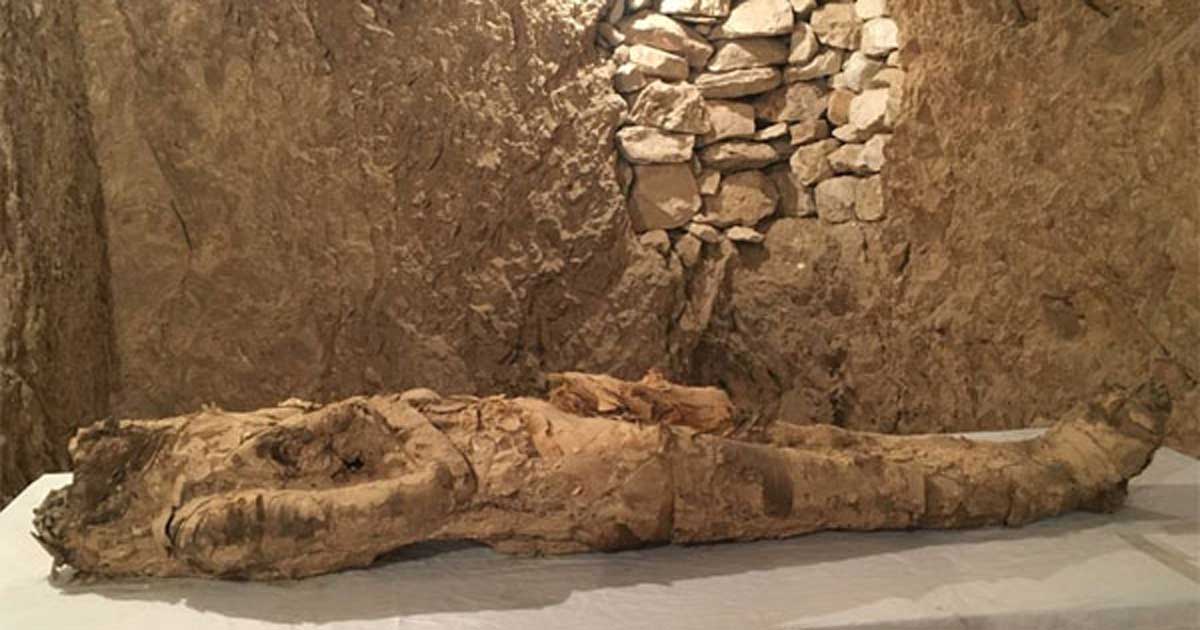Two Ancient Tombs Containing Numerous Treasures Unearthed in Egypt and One Contains a Mummy
Egyptian authorities have announced the discovery of two ancient tombs in the southern city Luxor that date around 3,500 years. They are packed full of grave goods, and one includes the mummified body of its occupant.
The Opening of the Tombs
According to Ahram Online, the two tombs are located on the west bank of the Nile River in a cemetery for noblemen and top officials. The archaeologists who examined them suggest that they date back to Egypt’s New Kingdom era and they were opened at Luxor’s Draa Abul-Naglaa necropolis years after they were originally discovered by German archaeologist Frederica Kampp back in the 1990s.
The opening of the tombs was announced during an international meeting in which many important figures were present, such as the governor of Luxor, the minister of social solidarity, the director-general of the International Monetary Fund, members of the international media, foreign ambassadors, members of parliament, and Minister of Antiquities Khaled El-Enany.
“It is a very important discovery because both tombs contain very rich funerary collections, and one of them has a very distinguished painted statue of a lady in the Osirian shape,” El-Enany told Ahram Online, pinpointing that 2017 has been a “year of discoveries,” with the latest discovery being the third Draa Abul-Naga alone. “It seems that our ancient Egyptian ancestors are bestowing their blessing on Egypt’s economy as these discoveries are good promotion for the country and its tourism industry,” El-Enany added.

An inspection of the painted walls in one of the newly-discovered tombs. Credit: Ministry of Antiquities
Kampp 161
Mostafa Waziri, the secretary-general of the Supreme Council of Antiquities and head of the Egyptian excavation mission, mentioned that both tombs were “baptized” by German archaeologist Frederica Kampp who originally discovered them. The first tomb was named “Kampp 161” but was never excavated, while excavation work on “Kampp 150” was conducted by archaeologist Kampp soon after she entered the tomb. Waziri also explained that the tombs remained intact until excavation works launched during the recent archaeological season.
According to Ahram Online, the most significant finds in Kampp 161 include a large wooden mask that was initially part of a coffin, a small painted wooden mask, a fragment of a gilded wooden, four legs of wooden chairs that were among the deceased’s funerary equipment, as well as the lower part of a wooden Osirian shaped coffin adorned with a portrayal of goddess Isis lifting up her hands.

The mask and part of the wooden coffin found in the tomb. Credit: Ahram Online
The Rich and Mysterious Status of Kampp 150
On the other hand, “Kampp 150” remains a mystery to the archaeologists. “The owner of Kampp 150 is not yet known, but there are two possible candidates,” Waziri told Ahram Online. He speculates that the tomb could possibly belong to a person named Djehuty Mes, as this name is inscribed on one of the walls. The second possibility, according to Waziri, is that the owner could be the scribe “Maati,” as his name and the name of his wife “Mehi” are inscribed on fifty funerary cones found in the tomb’s rectangular chamber.
The tomb has only one inscription on one of its northern pillars. It depicts a man who’s sitting, offering food to four oxen, with the first kneeling in front of the man, who is giving it herbs. The scene also portrays five people creating funerary furniture. Furthermore, archaeologists reported that the entrance of the long hall is engraved with delicate hieroglyphic text with the name of “Djehuty Mes.” The ceiling’s inscriptions and paintings indicate that it dates back to the era between the reigns of King Amenhotep II and King Thutmose IV, both pharaohs of the 18th dynasty.

Some of the artifacts discovered in Kampp 150. Credit: Ministry of Antiquities
The artifacts uncovered inside “Kampp 150” include over a hundred funerary cones, painted wooden masks, a collection of 450 statues carved in different materials such as clay, wood and faience, and a small box in the shape of a wooden coffin with a lid. As Ahram Online reports, the box was most likely used for keeping an Ushabti funerary figurine. Ultimately, archaeologists also discovered an assemblage of clay vessels of various shapes and sizes, as well as a mummy wrapped in linen with its hands on its chest in the Osirian form, which possibly belongs to a top official.
Top image: The newly-discovered mummy from a tomb in Luxor. Credit: Ahram Online

















